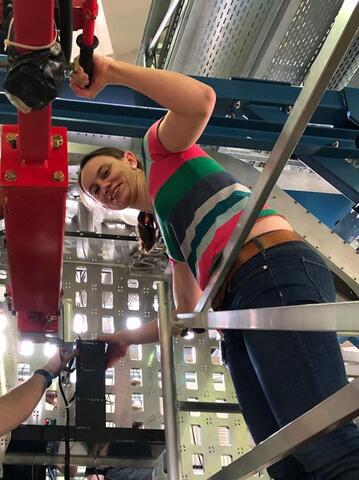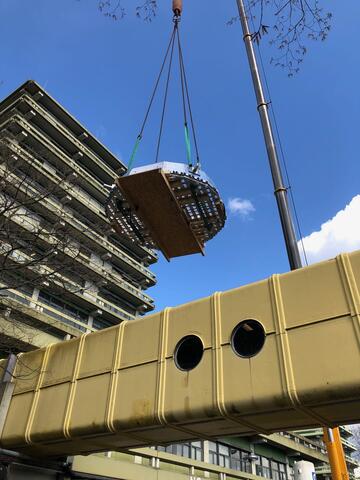Workshop „Physics Opportunities with Proton Beams at SIS100” was held in Wuppertal
PANDA meetings
04/03-08/03 2024 CM 24/1 in Münster
24/06-28/06 2024 CM 24/2 at GSI
25/06-26/06 2024 FEE/DAQ Workshop
04/11-06/11 2024 CM 24/3 at GSI
05/03-07/03 2025 WS at GSI
16/06-20/06 2025 CM 25 in Uppsala
Precision spectroscopy of charmonium-like (exotic) XYZ states at PANDA/FAIR -- Sensitivity study for width and line-shape measurements of the X(3872)
Frank Nerling
PA-PRO-2018-017.pdf
(1.74 MB)
Ralf Kliemt (Talk Tutor)
The PANDA experiment represents the central part of the hadron physics
programme at the new Facility for Antiproton and Ion Research (FAIR) under
construction at GSI/Darmstadt (Germany). The multi-purpose PANDA detector in
combination with an intense and high-quality antiproton beam allows for coverage
of a broad range of different aspects of QCD, and it is best suited for charmonium
spectroscopy. We present a comprehensive PANDA Monte Carlo simulation study for
precision resonance energy scan measurements, using the example of the charmonium-like
$X(3872)$ state discussed to be exotic. Apart from the proof of principle for
natural decay width and line-shape measurements of very narrow resonances, the
achievable sensitivities are quantified for the concrete example of the $X(3872)$.
The discussed measurement is uniquely possible with a $\bar{p}p$ annihilation
experiment such as PANDA at FAIR.
programme at the new Facility for Antiproton and Ion Research (FAIR) under
construction at GSI/Darmstadt (Germany). The multi-purpose PANDA detector in
combination with an intense and high-quality antiproton beam allows for coverage
of a broad range of different aspects of QCD, and it is best suited for charmonium
spectroscopy. We present a comprehensive PANDA Monte Carlo simulation study for
precision resonance energy scan measurements, using the example of the charmonium-like
$X(3872)$ state discussed to be exotic. Apart from the proof of principle for
natural decay width and line-shape measurements of very narrow resonances, the
achievable sensitivities are quantified for the concrete example of the $X(3872)$.
The discussed measurement is uniquely possible with a $\bar{p}p$ annihilation
experiment such as PANDA at FAIR.





